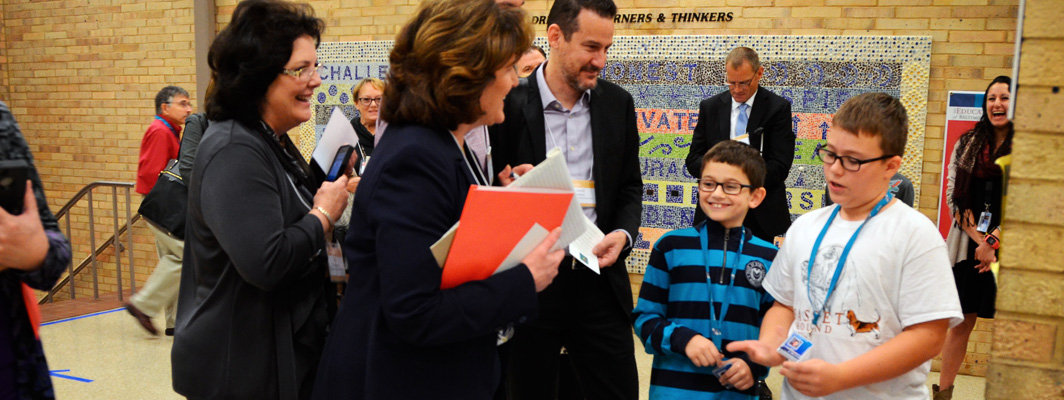
We’ve all seen segments on the evening news or read stories in the newspaper – but what work leads up to those moments? In particular, what is some practical advice for school districts hoping to receive press coverage for events that might feature the students, teachers, and activities that make your district special?
Recently, Albemarle County Public Schools (ACPS) hosted Digital Promise’s Maker Learning Leadership Institute, a professional development workshop for school districts looking to build their maker learning programs. In opening their classrooms to visitors from around the country and displaying their students’ and teachers’ achievements in maker learning, the district saw the event as a great opportunity to publicize ACPS to their community through the media as a leader in the maker movement in education.
ACPS’s Strategic Communications Officer Phil Giaramita, who has gained significant experience working with press throughout his career, used a number of techniques to receive positive news coverage from local print and broadcast outlets.
Organizing Internally
After the Maker Learning Leadership Institute was launched, Giaramita’s first step was to reach out to the event organizers to understand the aspects of the workshop that would be open to the press. Knowing as much about an event as possible means you can speak knowledgeably with reporters on details like the types of activities students will be displaying, whether photos and video are allowed, and if any of the activities are particularly unusual or newsworthy.
Giaramita was also able to determine which teachers and students were participating in the event, and talk to them in advance so they could practice answering questions reporters and visitors might ask. As Giaramita explained, “You don’t want to wind up in a situation where a reporter shows up with a notepad or microphone, and a teacher or student is caught off-guard and not sure what to say. They have an opportunity to tell a story because they’ve already been thinking about it.”
Reporter Outreach
With that preparation, Giaramita emailed a media advisory to reporters at least a week in advance to let them know about the event. He worked to get their attention by positioning, or framing, the event in an appealing way, highlighting details like the opportunity to interview and photograph district teachers and students as well as the superintendents visiting from across the country. Giaramita explained, “We try to frame the story for the reporter to give them a good sense of why it’s important, how it might interest their audience, and the significance of what we’re doing.”
Additionally, Giaramita specifically contacted reporters who he knows are interested in education. He explained, “When you send a pitch or a news release to a TV station or a news desk, it very rarely results in anything that’s significant. But if you send it to an individual reporter by name, it’s more personal. And, you need to get to know these reporters over time so you know what issues they’re interested in. … It’s about knowing reporters beyond their byline.”
Gaining Credibility
While some districts opt to send frequent media advisories and press releases about a wide variety of both small and large events, Giaramita cautions that this might not be the best approach to building good relationships with reporters. He said, “To me, the credibility piece to this is really important. If a press release shows up in an inbox of a reporter that’s from ACPS or me personally, what’s going to make them read it? You have to reserve news releases for significant events or things that are truly newsworthy.”
Giaramita’s outreach resulted in two spots on the evening news, five articles, and a radio interview. These pieces helped the district celebrate the great things happening with their maker learning initiatives, increasing community support and helping to further establish them as education leaders around the country.
Now it’s your turn! If you’re in a school district that wants to invite press to an upcoming event, we’ve provided a media advisory template you can download, tweak, and share. Additionally, many school districts might consider assembling press kits, or packages of materials for reporters. These kits, which can be emailed in advance or handed out at the event depending on the materials inside, might include any or all of the following:
Let us know in the comments below how you’ve been able to successfully promote your school’s events!

We want to hear from you!
Please take this 5-minute survey and help us serve you better.
